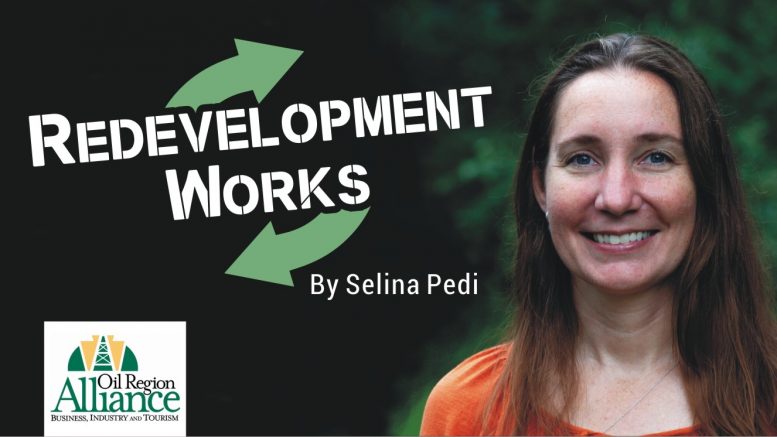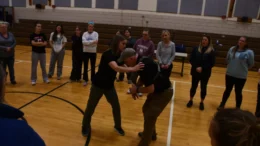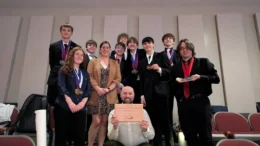I often get asked what exactly redevelopment is, or what kind of projects we are involved in, and it can be challenging to succinctly describe what goes on in a very wide-ranging field! One benefit of the creation of our regional coalition is that it offers a fantastic opportunity to describe exactly how redevelopment can work, in all of its multi-faceted glory – to show how widely different industries and organizations can come together for mutual, community-wide benefit.
Take just one arm of our regional strategy: energy resilience. One of the coalition members in this regard is Central Electric Cooperative (CEC), who many of us know as our trusted electricity provider. CEC is a member-owned energy cooperative serving roughly 25,000 members over seven counties, and they are responsible for more than 3,000 miles of distribution lines. That’s a lot of line, over hill and dale, in an area with strong winds, torrential rains, and heavy snows and ice storms. Needless to say, it’s no easy job maintaining all of that line and minimizing any disruptions to the regional power supply!
It is possible to make an energy distribution system more resilient, of course. Lines can be buried instead of hung on poles. Lines, whether above or underground, can be beefed up. Redundancies – extra connections – can be made between substations. This type of work is very, very expensive, though, and it takes a tremendous amount of manpower. Just one mile of improved line can run nearly $250,000. Multiply that by 10 miles, or 100, or 1000….and…yeah.
One relatively small, rural regional energy cooperative can’t necessarily afford those sorts of upgrades. Not alone, in any case. Add in the power of a regional coalition, though, with a diverse group of public, private, and nonprofit partners, and new opportunities begin to arise. Connections – both obvious and otherwise – start to appear. Sure, it makes sense for an energy cooperative and a rural redevelopment hub to team up and apply for infrastructure-related grants, but, believe it or not, sheep are part of the equation, too!
A sheep-related agricultural partnership with a private development firm leads to conversations about energy resilience since improved energy distribution means more stability (i.e., less downtime!) for processing and manufacturing facilities. That opens up the potential for private investment alongside public funding, which lessens the overall risk in a proposal and improves the chances grant funding will be awarded. The potential for substantial upgrades attracts the attention of additional private partners, in multiple industries, since improved energy distribution lines allow for improvements in broadband, metering, storage, and corporate sustainability alongside greater stability in power supply.
In short order, a few separate conversations about seemingly unrelated topics bring together organizations and companies involved in agriculture, manufacturing, energy, education, and outdoor recreation, with the potential to improve the economic prosperity, environmental resilience, and quality of life of our region for generations to come.
That, my friends, is redevelopment. There’s no guarantee that any given grant proposal will be successful, or any given private partnership will pan out, but the opportunity to develop those relationships and even have a chance at those grants, those private investments, and that community benefit, is what redevelopment is all about.
Selina Pedi is the Oil Region Alliance redevelopment manager. She can be reached by email at spedi@oilregion.org.




































